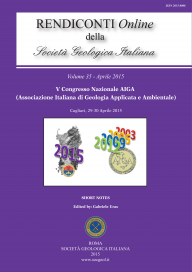
Estimating cliff-recession rate from LiDAR data, East Sussex coastline, South East England
Luigi Parente (a), Paola Revellino (b), Luigi Guerriero (b) G. Grelle (b) & Francesco Maria Guadagno (b)
(a) Institute of Marine Sciences, National Research Council, Arsenale – Tesa 104, Castello 2737/F, 30122 Venice, Italy.
(b) Department of Sciences and Technologies, University of Sannio, via del Mulini, 59/A, 82100 Benevento, Italy.
DOI: https://doi.org/10.3301/ROL.2015.105
Volume: 35/2015
Pages: 220-223
Abstract
We investigated a ~11km stretch of the East Sussex coastline (South East England) using airborne Lidar data with the aim to analysing the average recession-rate on high soft cliffs. The recession rate was calculated on a short interval (2007–2009) using two LiDAR-derived Digital Elevation Models (DTM) and following an approach based on a simple trigonometric relation. The calculated retreat values show spatial variability consistent with the geological settings and with the presence or absence of mitigation engineering works. An average rate of retreat of 0.1 m y-1 was calculated for the whole area. The protected sections, where the sea influences are mitigated by a concrete promenade, have retreat values that range between 0.02 m y-1 and 0.09 m y-1. The unprotected sections show the highest values, as expected, ranging between 0.1 m y-1 and 0.3 m y-1. Finally, although retreat trends are not easily predicted because the interplay between numerous factors (eg. sea level rise, storm frequency, wind direction, etc.), future cliff-line positions were estimated on a linear basis, highlighting likely influence of development and engineering structures.
Keywords
Get Full Text